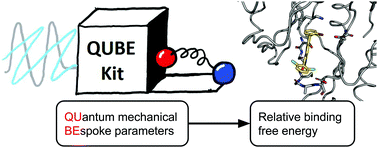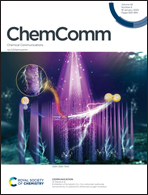Modelling flexible protein–ligand binding in p38α MAP kinase using the QUBE force field†
Abstract
The quantum mechanical bespoke (QUBE) force field is used to retrospectively calculate the relative binding free energies of a series of 17 flexible inhibitors of p38α MAP kinase. The size and flexibility of the chosen molecules represent a stringent test of the derivation of force field parameters from quantum mechanics, and enhanced sampling is required to reduce the dependence of the results on the starting structure. Competitive accuracy with a widely-used biological force field is achieved, indicating that quantum mechanics derived force fields are approaching the accuracy required to provide guidance in prospective drug discovery campaigns.



 Please wait while we load your content...
Please wait while we load your content...